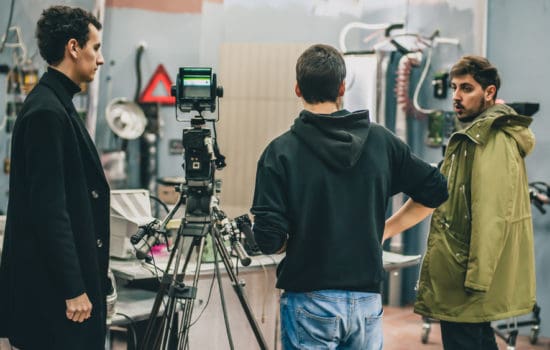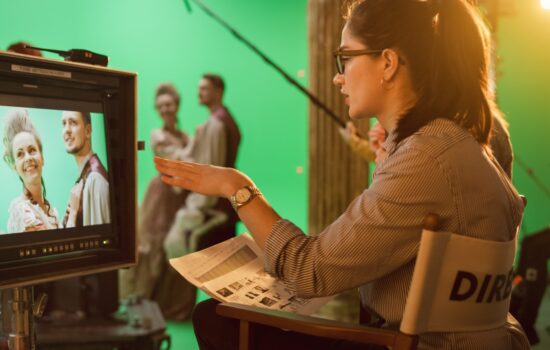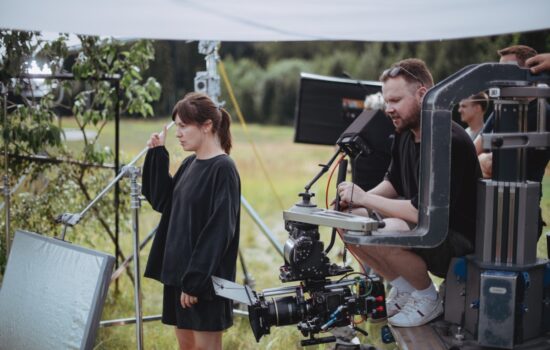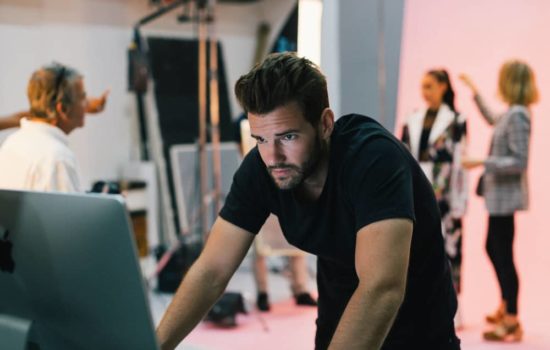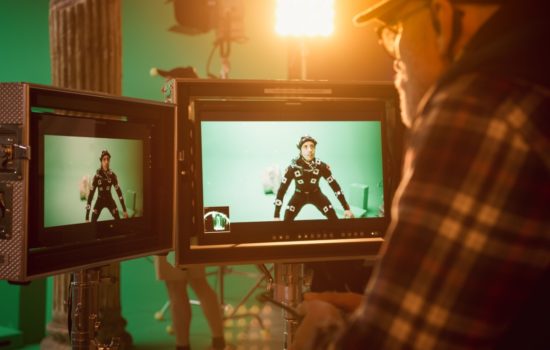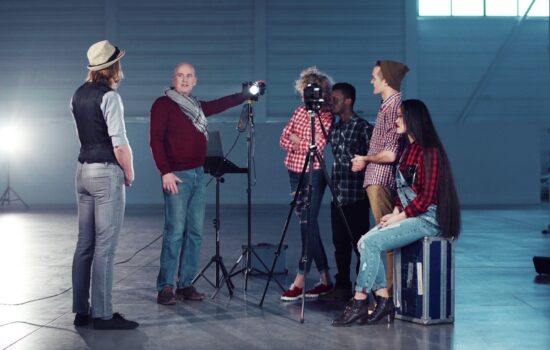Key Hair Stylist
Career Overview
Key Hair Stylists cut and style the hair and wigs of Actors, Background Artists and Stunt Performers on television series, feature films, commercials or short projects.
Alternate Titles
Key Hairdresser, Key Stylist, Key Hair Designer
Avg. Salary
$77,0001

How To Become a Key Hair Stylist
People also ask
Career Description
Kerry Mendenhall, Emmy Award-winning Key Hair Stylist on Animal Kingdom, Nashville and Jonah Hex first explains the hierarchy in the Hair Department: “Key is in third position. We have the Department Head, the Assistant Department Head and then there’s the Key Stylist.”
She goes on to lay out the infinite variety of work behind the chair: “So often we’re working on series and films set in different eras so we do a lot of ‘period’ hairstyling. If you’re styling for the ‘30s or the ‘50s, say, you have to study those periods as needed. We rarely color, but you need to learn the cuts and styles.”
Mendenhall also explains that Hair Stylists in the entertainment industry are constantly learning about all sorts of hair products: “We have to know how they function over a full day of work. How do they perform in humidity, in the rain, on hot summer days?”
Mendenhall describes some other important responsibilities of the Key Hair Stylist: “If the Department Head is busy, the Key helps with making phone calls to hire the day help, called ‘Day Checkers.’ We also keep track of the continuity photographs. This entails the Key Stylist photographing all four sides of the Actor — this way, we can maintain the style or be able to go back to that scene in the future and keep the same look.
“The Makeup Department tends to photograph only the face, but in the Hair Department, we document all angles so we can reference it any time.” Mendenhall says the Key Stylists have to keep track of those photos and keep the continuity book in order: “When the Department Head needs something quickly, they can open the book and get it. Now we’re transitioning more to digital archiving, but I still like to keep old-fashioned printed photos.”
If the Department Head has to go back to the trailer to do someone’s hair, the Key Stylist will watch the set and ensure the Actors’ hair is maintained. “The Department Head and Key often rotate functions so it all depends on the particular working relationship.”
Mendenhall explains that the Key Stylist works a lot with Stunt Doubles: “If you have a Stunt Double, you might have the Key Stylist pull out a wig for them, or even go out and buy one. The Key might also be charged with matching the hair color of the principal Actor to the double so we can get the closest fit.
“I have to make sure that it’s as close looking as possible so when they’re on camera, you can’t tell. (Hopefully!) We also try to be as cost-effective as possible; there are times we’ll have a custom-made wig, but that’s only on the higher budget projects such as Daredevil. Normally, we have to be very mindful of finances. On the whole, we cut, paint and fit ready-made wigs when it comes to the Stunt Doubles.”
Background Artists are also an integral part of the Key Stylist job, says Mendenhall: “I just did Animal Kingdom which was set in the ‘70s and I would bring the Background Artists into the main trailer to do them.
Often there’s a second trailer for Background, or a tent, or even ballrooms in hotels. I actually really like doing Background Artists’ hair because you get to try some innovative stuff — I actually miss being able to do that now that I’m a Department Head.”
Typical days are dependent on the project and the Department Heads. It’s also variable depending on the Actors needed on the day. Mendenhall says, “Sometimes we’re first in, last out but, other times, if you’re in early, the Department Head will try and get you out a bit earlier. We try to be conscientious and mindful to share the hours. Some shows will make you work all of it, others are more understanding.”
On the day, the Department Head divides up the Actors between the Key Stylists: “We try to keep Stylists with certain Actors if possible. But it really depends — there are so many variables. If a Key gets ill or can’t be there on the day, we need to make sure someone else can step in and take over so we all try to know what everyone is doing.
“Certain Actors don’t mind if they always get someone different, but others can’t stand it if they get someone other than their regular Stylist. There are times when you’re looking after multiple Actors and you’ll be on set with one and can’t tend to the other — someone else will have to step up. On high-end movies, there is less sharing around, but TV has a much higher turnover.”
It turns out that speed is the most important aspect of the job: “I can do hair very quickly — you can’t have a Stylist holding up camera because it’s taking them over an hour to do an Actor’s hair. That’s unacceptable. For me, I will be on them if they’re not fast enough.
“Of course, if it’s very specialized hair, say, for a Star Trek episode or you’re working with African-American hair that needs some extra focus, these are additional variables and you just schedule in extra time prior. But if there’s no need for special attention, it’s ‘the faster the better’ to get the Actors through the trailer.”
Mendenhall details the difference between behind-the-chair work in film and in television: “Working in features, there’s a little extra time, but the workflow in television is much faster. The reality is that most Actors don’t like to take a lot of time in hair and makeup, although there are a few who want to stay in the trailer as long as they can!
“But most want to get through quickly and have it look fabulous. That combination of skill and speed takes years of practice. In a salon, you have time to make it really wonderful; for screen, you have very little time to hit that fabulous look.”
In terms of creative decisions, the Department Head meets with the Director to discuss their ideas, and then the Actors have their own thoughts.
Mendenhall elaborates: “There’s a hair and makeup test to make sure the look is right and we send pictures over to the Director. Some Directors are really hands-on and have opinions, and others defer entirely to the artists themselves. You have Directors who like more natural-looking hair and that’s what I’m known for — I don’t much love work that’s too polished and pretty.”
Mendenhall recalls one particular story where the Actor’s expectations and the Director’s vision were at odds: “I remember one time the Actor was really upset at me about their hair, I mean really upset. But it was exactly what the Director and Producers wanted; the Director even complimented me publicly, right on set in front of everyone.
“That Actor subsequently hated me and would barely talk to me after that! There are times when it’s a tough balance to please both the Director and the Actor.”
How do you get into movie hair?
If you aspire to be a Hair Stylist for the film industry, you must first learn how to work with hair. That typically means graduating from cosmetology school before attempting to work with clients or on projects.
Many would-be Hair Stylists start out as Assistant Hair Stylists to learn from more experienced professionals. Building a professional network of contacts within the film industry is another must for anyone looking to work in this field.
Salary
The average annual salary for a Key Hair Stylist is approximately $77,000.
Earnings are entirely dependent on how much you work over the course of a given year, but there are minimums set by the union. For a Key Hair Stylist, the hourly minimum on a network show is around $50 per hour, although this can be higher for more experienced Keys.
Days tend to be fairly long, so the hours do rack up and salaries can be extremely healthy. $600 per day is fairly standard so, assuming ten months of solid employment over the course of a year, expect annual median salaries around $120,000 per annum.
Hey, what do you think about trying our new Film Career HelperFilm Career Helper really quick? It’s totally free and could help get your career moving fast! Give it a try. It’s totally free and you have nothing to lose.
Career Outlook
Mendenhall explains that work/life balance is a very individual thing with everybody approaching it differently. Her advice for career longevity is very much focused on maintaining personal wellbeing:
“Yes, I do work a lot but I take vacations to visit family and friends. I also think nutrition and wellbeing are vital; for the long-haul of being a Hair Stylist, you need to be in physically good nick. I have a trainer and I eat really carefully.”
There is another factor in a film and television styling career that younger people might not consider, and Mendenhall is very keen to shed light on the danger: “Because we work outside a lot, I tell every new Stylist that skin cancer is no joke and it is rampant in our industry.
“If people are wearing sleeveless tops or showing too much skin, it’s extremely dangerous over the course of a career. You really have to protect yourself from the sun. Please do not forget that.”
All in all, Mendenhall wants to emphasize her love of the game: “I love the variety of this job and the incredible people you meet. The reality is, if you want to get into this business, you need a positive, ego-free attitude, otherwise, you won’t get far!”
What is the highest level Hair Stylist?
The highest level Hair Stylist on a film production is referred to as the Key Hair Stylist. This individual oversees the entire hair department, which may include other Hair Stylists or Hair Stylist Assistants, to create the various looks of the cast’s characters.
Career Path
A Sassoon protégée herself, Mendenhall says that every Hair Stylist in the trailer will have a completely different journey, but all will need to have behind-the-chair salon experience. As for her own route to set, “I’m from Modesto, California and I went on to a degree in Cosmetology and Psychology. Honestly, it’s the perfect mix for my job.”
All in all, every aspiring screen Stylist will mark their own journey to the trailer but Mendenhall says that those with a genuine passion for the job will stay, and will be fortunate to have found a place in an exciting, dynamic industry.
It isn’t straightforward finding that first job in hairstyling for the screen, but Mendenhall has a few tips: “I’ve had people shadow me, with permission from the production, they can come in and observe our work. The union rules are such that they can’t actually do anything or help, but they can come into the trailer and watch to see what we do.”
Ultimately, it’ll take a lot of cold-calling and contacting Key Hair Stylists to keep yourself in their minds: “At the beginning of my career, I bugged everybody, called everyone until I could get on some non-union projects. It was sheer tenacity that led me to where I am now. There are a lot fewer non-union jobs now so it is more difficult.”
The thrust is that you should try and contact working, on-screen Hair Stylists, preferably with some portfolio to show them, and see if they will let you come on set to watch. Once you are there, you can prove yourself an invaluable part of the team and build your contacts that way.
Practically, Mendenhall explains that the first step is to get licensed: “We are all licensed in various US states. In California, you are allowed to be licensed from any state, but you do need to be licensed to start out, showing that you have a strong hair background.” Visit the website of the California Board of Barbering and Cosmetology for up-to-date licensing information.
- See if there’s a way to shadow a Key Hair Stylist, even on a non-union job. Reach out to anyone and everyone — don’t let a few rejections stop you!
- Make sure you are professionally groomed and appropriately dressed for the weather conditions outside. Personal hygiene is paramount; you can’t come to work looking a mess and stinking to high heavens!
- On-screen Hair Stylists need to be careful with perfume — so many people are sensitive to the smells so be clean, but don’t overdo the scent!
What is the most famous Hair Stylist?
There are many famous Hair Stylists, but on the list of the most well-known professionals in this field are certainly Vidal Sassoon and Frédéric Fekkai. Within the world of film, many celebrities go to famous Hair Stylists for their personal needs or for a night out at an awards ceremony. On set, though, Hair Stylists tend to be working professionals who are not generally known to the public at large, though they may be very good at what they do.
Experience & Skills
Of course, basic salon skills are a must, but Mendenhall recommends something beyond Susan Lipson’s classes: “The bottom line is, if you can’t work with Susan, you must at least find a union Hair Stylist who is willing to teach you some foundations. There are experienced on-screen Stylists all over the US who are starting to offer film and television-focused hairstyling classes at community colleges so it’s worth keeping your eyes peeled for those.”
Ultimately, getting hands-on experience is priceless so, while building your portfolio in the salon, check mandy.com and even craigslist.com for entry-level Production Assistant gigs. Once you’re on set, find your way to the hair trailer and share your work and enthusiasm. Competition is fierce, but a personal appearance and a willingness to hustle (carefully) goes a long way.
In film and television, the hair and makeup trailer is an intimate space. People can lose themselves in the close atmosphere, so Mendenhall shares her wisdom to avoid the pitfalls: “People forget to be a professional and they want to be every Actor’s best friend. It’s important to be professional and pleasant and defer to the Actor.
“It causes problems if you’re overfamiliar. It’s taken me many, many years to understand that you have to step out of your own ego. Yes, be proud of your work and your job, make everybody happy, but you can’t have any ego about it.”
Mendenhall takes care to emphasize the discretion and tact needed for any aspiring Key Hair Stylist: “When an Actor sits in your chair you have to know when to be quiet, do your work and not strike up a conversation. It took me a while to understand that. Further, you just might not be the right personality for a particular Actor and that’s when the Department Head has to come in and recognize the chemistry between certain Stylists and Actors.
“There are people that fit well together, and others who don’t. I remember a time when I had a younger, teenaged Actor who wouldn’t talk to anybody, so I assigned a younger Stylist to work on their hair. It turned out to be the right call because the Actor really opened up to her and they were able to talk about things that I have no idea about!
“As teenagers, they were into things that I’m just not in to. There’s an enormous amount of psychology that goes into working behind the chair in film and television.”
With regards to discretion, Hair Stylists have to protect the Actor at all costs: “Actors share all kinds of personal things. I’ve had magazines call me and ask about certain performers and their personal life — I will never, ever talk about anything personal with Journalists.”
So much of a Key Hair Stylist’s career is spent working closely with other people, so amiability is crucial, says Mendenhall: “As an artist, you’re going to meet all different types of people — some you will click with, others you won’t, like any career. I think you need the right balance of honesty and integrity. You also need to own up to your mistakes.
“If you mess up, it’s fine — nothing diffuses the situation better than saying, ‘I made a mistake, I’m sorry, let’s move forward.’ I’ve been very active in studying the psychology of how to be a better Hair Stylist and Department Head in the film business. Every Stylist gets laid off a job at some time or another and it’s best to ask yourself, ‘How can I make myself better?’
“I have a good reputation because I’ve worked really hard at achieving the right balance of skill and personality.”
In terms of the mistakes younger artists make when they enter the industry, Mendenhall has seen it all: “I know people who are no longer hired because they don’t listen to suggestions, they talk back, and they can’t do their job without being told every step of the way. Then they don’t understand why no one will hire them.
“They’re talented, but they won’t work because they have the wrong approach to the job. Some hair and makeup trailers have a lot of drama in them and I choose not to work there. We’re all artists in there and you just cannot influence the Actors that way; they have their job to do and they need the space to prepare properly. The psychology is deep.”
Education & Training
In terms of education and training specific for hairstyling in the film and television business, the pickings are slim. Of course, salon-based styling and skills are a pre-requisite for anyone looking to transition into behind-the-chair work in entertainment.
Beyond that, Mendenhall recommends classes and courses led by industry veteran Susan Lipson: “Susan is known across the industry for her classes. Let’s say you’ve worked in a salon, but know little to nothing about on-screen hair work; I would highly recommend her courses.
“I will say they’re not cheap, but she gives you a background about on-set etiquette and how to act around cameras and Actors. I’ve called her before for non-union people and she has a lot of contacts from her years of experience teaching the foundations of on-set hairstyling.”
Mendenhall goes on to explain that, beyond the fundamental cutting and styling skills, much of the basic recipe for success lies in your approach to the work. As she illustrates, “I know two girls who worked at Disneyland, did all the shows there. They’re incredibly talented, worked a lot with wigs and did all the fantasy, Disney-themed people walking around the park. They finally racked up their non-union days and joined the union.
“However, beyond their skills, I actually hire them as often as I can because they are pleasant, they are a joy to be around. Yes, they are talented, but I hire them over and over because they are easy to work with. That’s the key.”
Additional Resources
IATSE Local 706 is the guild that represents Makeup Artists and Hair Stylists — all the information on joining is on the website. Mendenhall says: “To get into the union, you need to build up your hours on non-union jobs. Check the union website for up-to-date details on what exactly is required. I cannot hire anyone outside of the union.” As such, focusing on union membership is a must for anyone looking to break in.
FAQ
What is the single biggest suggestion you would give to someone wanting to get into this career?
“Know clipper cuts as well as cutting techniques. Be willing to do anything and have a pleasant can-do attitude. Ultimately, just be happy to be there!”
What’s the #1 mistake people make when trying to get into this career?
“Don’t go overboard and start sharing personal stuff like religion and political affiliations in the trailer. It’s nobody’s business but your own — there are certain things that definitely should not be discussed in the trailer. Have a common-sense attitude about your behavior. I think it’s about knowing your place; if an Actor talks to you, that’s great, have a conversation with them, but don’t overshare.”
If you could describe in one word what makes you successful, what would it be?
“Integrity.”
Sources
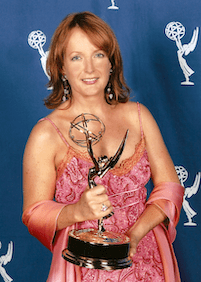
Kerry Mendenhall
Kerry Mendenhall is an Emmy Award and Hair Stylist Guild Award-winning Hair Stylist. Her body of work spans over 30 years and includes enormously successful television shows and feature films, including Nashville, CSI, Dead To Me, Jonah Hex, Saving Mr. Banks and Aquarius. She is currently working on TNT’s Animal Kingdom and making darn sure she’s well protected from the sun.
Her work has been highlighted in Backstage, So You Want to Work in Set Design, Costuming or Makeup?, and The LA Times.
References
- 1THR Staff. "Hollywood Salaries Revealed, From Movie Stars to Agents (and Even Their Assistants)". The Hollywood Reporter. published: October 2, 2014. retrieved on: April 9, 2020
